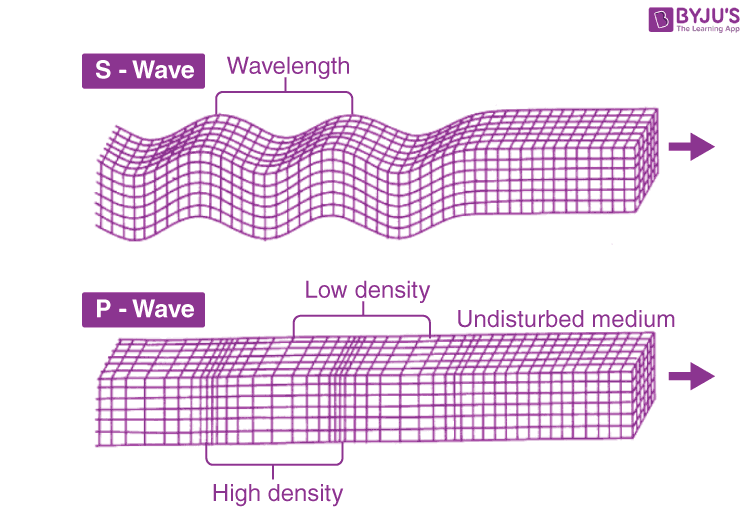Earthquake waves
When an earthquake occurs, it releases waves of energy, which are known as Seismic waves. It is like the ripples created in water if you throw a stone in it. Seismic waves are like those ripples which can travel through the inside of the earth, as well as on the surface.
P waves, S waves, and Surface waves
Based on the medium they travel in, earthquake waves can be classified under two categories:
- Body waves
- Surface waves
Body waves are those waves that travel through the earth. They originate at the epicenter of the earthquake and travel through the earth at amazing speeds. There are two types of body waves namely,
- P waves
- S waves
Surface waves are those waves that travel on the surface of the earth. The destruction caused by earthquakes is primarily done by these waves.
S waves and P waves
S waves also called secondary waves and shear waves, are the second waves to hit the seismographs. They are transverse waves, which means that the motion is perpendicular to the direction of wave propagation. S waves can only travel through solids and scientists have been successful to map the interior of the earth by studying the routes of these waves.
P waves or Primary waves are the first waves to hit the seismographs when an earthquake strikes. They are longitudinal waves which means that the direction of motion and propagation are the same.

Difference between p waves and s waves
| P waves | S waves |
| P waves are the first wave to hit the earth’s surface. | These arrive after P waves. |
| These waves travel in the speed range of 1.5-13 km/s. | These waves are almost 1.7 times slower than P waves. |
| These waves travel in a linear direction. | These waves travel in a transversal direction. |
| These waves can travel through solid, liquid, and gas. | These waves travel through only solids. |




Comments